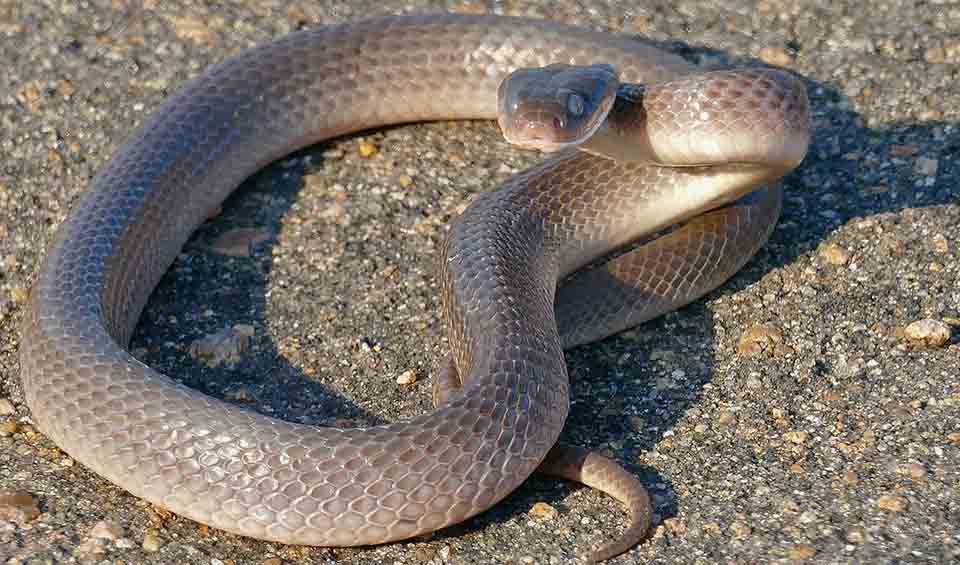Crotaphopeltis
their venom-delivering fangs are located toward the back of the mouth, and they must chew slightly to envenomate their prey
A small group of mildly venomous, rear-fanged snakes native to sub-Saharan Africa. Often called “montane night snakes” or “African slug-eaters,” members of this genus are mostly nocturnal and are known for their shy, secretive behavior. While not as famous as cobras or vipers, these snakes are important contributors to their ecosystems, quietly working behind the scenes as pest controllers by feeding on amphibians, reptiles, and invertebrates.
These snakes are slender, with smooth scales and large eyes suited for low-light vision. Their coloring is typically subtle—shades of olive, brown, gray, or black, sometimes with pale bellies or faint striping. This understated look helps them blend into the leaf litter and underbrush of forests, grasslands, and agricultural areas, where they’re most often found.
One of the most notable species is Crotaphopeltis hotamboeia, commonly known as the red-lipped snake or Herald snake. This snake is easily recognized by the reddish or orange markings on the lips and throat, which contrast sharply with its dark body. Although it has venom-producing glands and enlarged rear fangs, its venom is mild and used primarily to subdue small prey like frogs, toads, and lizards. It is harmless to humans, and bites are rare and not considered medically significant.
Although generally solitary and elusive, Crotaphopeltis species are sometimes encountered in suburban gardens or rural areas—particularly after rain. When threatened, they may flatten their bodies, raise their heads slightly, and hiss or strike with a closed mouth in a defensive bluff, but they rarely bite. Their calm nature and modest size make them non-threatening, though they’re often mistaken for dangerous snakes and killed unnecessarily.
Species in this genus
Red-lipped snake
Mildly venomous and completely harmless to humans


